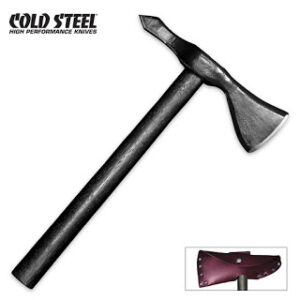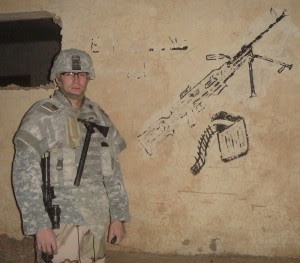I was interested to see that the Vietnam Tomahawk is seeing wider issue.
The original Vietnam Tomahawk was created by Peter LaGana and saw some use in the Vietnam war.
According to some sources its use was officially discouraged for political reasons, a decision made by individuals who regarded carpet bombing, napalm, flamethrowers and Agent Orange as acceptable.
Troops that needed to fight at close range had to use machetes, entrenching tools and hand axes rather than the LaGana’s tomahawk. No, doesn’t make any sense to me either!

Decades pass, and about ten years ago I heard the US Army engineers had approved the LaGana as an “Obstacle Removal Tool”, a term that rather amused me.
It seems the idea has caught on with issue now being more widespread. The current version is called the VTAC (Vietnam Tactical) and the main difference appears to be a synthetic handle with some moulded cross-hatching to improve grip.
From reports these are mainly being used for general utility tasks such as breaking down doors and part of me wonders if a mass-produced standard hatchet with a lower price tag might have served as well?

A good ten years or more ago I brought myself a replica of a Vietnam Tomahawk. I don’t recall what company I brought it from but I am fairly certain it was not Cold Steel.
As soon as I had unpacked it, I decided to try it out with some figure-eight combat moves. No sooner had I started when there was a clunk.
The clunk was the backspike of the tomahawk hitting me in the temple. Luckily only the side of the spike had hit me otherwise I would not be writing this now. A slight variation in angle and I would probably have killed myself in a very embarrassing manner.
My feelings about the LaGana are therefore rather mixed.
While it has great potential, I am obviously wary about a weapon that can so easily injure its user when making what is a fairly fundamental combat move.
I would be much happier if the LaGana was offered with the option of a longer handle than the 13" one it has.
The handle itself could do with some redesign. It is oval in cross-section, which is very good. While there is some contouring, it is very shallow and less than one would see on a typical hardware store hammer.
A tomahawk is a head-heavy weapon so swinging it tends to naturally pull it from your grasp. There seems to be a reasonable chance you could lose grip on such a straight-sided and smooth handle, particularly once your hands got sweaty or blood got on them.
The synthetic-handled VTAC has some mouldings intended to improve grip but still looks rather straight-sided. An increase in diameter at the butt would be a welcome feature.
One good addition on the newer models is the provision of a hole for a retention loop.
The VTAC has a 14" handle that appears to be secured with a hex-bolt, so perhaps there is a possibility of replacement alternate handles?
If you use a LaGana or VTAC, wrapping the handle for increased grip will probably be a prudent move.

While in the process of making your tomahawk combat ready, you might consider painting it.
Original Vietnam Tomahawks were green, which was fine for South East Asian jungles. Other examples and the VTAC appear to be black or dark green, and these really stand out against a desert camouflage combat dress.
Spraying it flat-earth or coyote-brown will improve its camouflage abilities in most environments, not just the desert.
The most distinctive part of the Vietnam Tomahawk and VTAC is its head. The most obvious part of the head is the backspike that so nearly caused my accidental demise.
Most hatchets, hand axes and tomahawks have a face intended for hammering. The LaGana has a spike that was probably intended to penetrate skulls or steel helmets but is often used these days to ventilate fuel drums.
The axe bit is also unconventional in that it is also sharpened for part of its lower edge. On my example, the thickness of the blade gives this quite a broad bevel so this is not particularly sharp and I suspect is unlikely to ever be that sharp.
This feature might give the tomahawk some added capability if used to clear undergrowth and will improve the penetration of the lower point of the edge. Should the main edge slightly miss the intended target, which is always possible in combat, this lower edge should increase the likelihood of still causing damage.
The Vietnam tomahawk is a good tool, but could easily be better.
The handle needs to be redesigned for better grip and retention and needs to be longer so the head is less likely to injure the user in the heat of combat.
As some of you may know, my benchmark in close combat weapons is the kukri. The kukri can handle many of the cutting tasks a tomahawk can. It is easier to bring into action if it starts sheathed. It is more likely to stay in my hand when swung and not likely to injure me.
To close, a video of Paul LaGana demonstrating his creation. Note how long it takes to draw and ready from his belt.